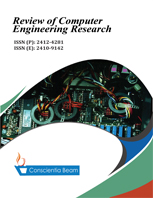Activity Recognition and Creation of Web Service for Activity Recognition using Mobile Sensor Data using Azure Machine Learning Studio
DOI:
https://doi.org/10.18488/journal.76.2021.81.1.7Abstract
With the increasing pervasive computation, “Activity Recognition” has become a vast and popular field of research. In the field of automated Activity Recognition, we use multiple sensors in wearable/portable devices in order to recognize the human activities such as standing still, sitting, relaxing, laying, walking, climbing stairs, knee bending cycling jogging etc. The main purpose of this paper is to discuss the field of Activity Recognition for patients and old- age persons or any person in general. This research paper can also be used for telemedicine purposes. Besides, different machine learning algorithm will be applied to achieve Activity Recognition rather precisely. Microsoft Azure ML Studio and a bench marking data set are used for creation as well as evaluation of Machine Learning Model. In addition, a Web Service for Activity Recognition is also developed by using Microsoft Azure ML Studio in order to help the developer and researcher while working on Activity Recognition.





